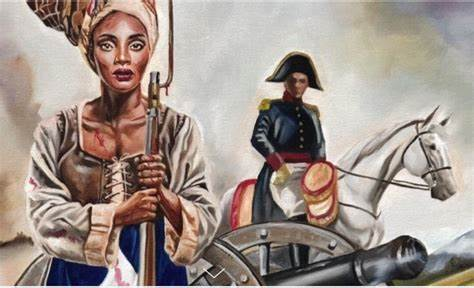Legendary Women in the Haitian Revolution
Often, when we discuss history, we ignore the role of women. Doing this not only marginalizes women but also reifies patriarchy. Haitian women played a decisive role in the Revolution. These women, much like the males, provided a wide range of skills. First and foremost, Haitian women served as combatants. Such skills they had been trained in various West African societies, which allowed women to participate in war actively. (Boisvert 2001) Some Haitian women were trained in a variety of herbs and medicinal products. These women, who formally served as midwives, rejected the colonial-imposed Catholicism and again practiced Voodou. As priestesses, they weaponized their medicinal training and created poisons against the French enslavers. (Boisvert 2001)
Here are just a few of the
legendary women who fought in the Haitian Revolution:
Legendary Women in the Haitian
Revolution:
- Suzanne Bélair, known as Sanité Bélair, was a Haitian revolutionary leader and served in Toussaint Louverture's army. She and her husband, another lieutenant
in Louverture's army, were eventually found and executed at Napoleon's
command.
- Marie Sainte Dédée Bazile was an important figure in the Revolution and is known for having gathered the remaining parts of Haiti's first Emperor, Jean-Jacques Dessalines, after his brutal assassination.
- Marie-Louise
Coidavid was the first and only Queen of an independent Haiti. She and her husband, Henri I of Haiti, endured the difficulties of military life, and she was forced to witness the assassination of her firstborn child. After she lost her husband, she settled in exile in Italy.
- Catherine
Flon was a seamstress who famously sewed the first Haitian flag at
the request of Dessalines, but she is also known for having nursed the
sick and wounded after nearby battles.
- Cécile
Fatiman was a mambo (a vodou priestess) who is believed to have
formed networks on the island of Haiti that would transfer information
from plantation to plantation.
- Marie-Claire
Heureuse Félicité was an educator who
shared her knowledge of French to free blacks. She was married to a French painter who died shortly after. Eventually, she became the first Empress of Haiti after her marriage to General Jean-Jacques Dessalines, who crowned himself emperor of Haiti on October 8, 1804. Emperor Jacques I was assassinated on
October 17th, 1806.
- Marie-Jeanne
Lamartiniére was a Haitian soldier known for her courage and skills in battle and strategy. She was a leading figure in the pivotal
Battle of Crête-á-Pierrot in 1802. She fought in a male uniform and was
well-respected by her male compatriots.
- Suzanne
Simone Baptiste Louverture was the dedicated wife
and caretaker of Toussaint Louverture. Reports about her life contradict
one another but she certainly underwent horrific torture when
captured by Napoleon. They demanded
information about her husband's whereabouts, which she never divulged.
The details surrounding her death
are unclear.
- Victoria
Montou known as "Toya" was a fighter in Jean-Jacques
Dessalines army during the Haitian Revolution. She had served as a warrior for the
Empire of Dahomey in Africa before she was shipped as a slave to Haiti. She soon escaped the plantation and some
report that she agreed to rescue a newborn baby and train him in battle
skills she learned as a warrior in Africa. This young boy allegedly became the
future leader, Dessalines.
[RC1]Boisvert, Jayne (2001). "Colonial Hell
and Female Slave Resistance in Saint-Domingue". Journal of Haitian
Studies. 7 (1): 73.



Comments
Post a Comment